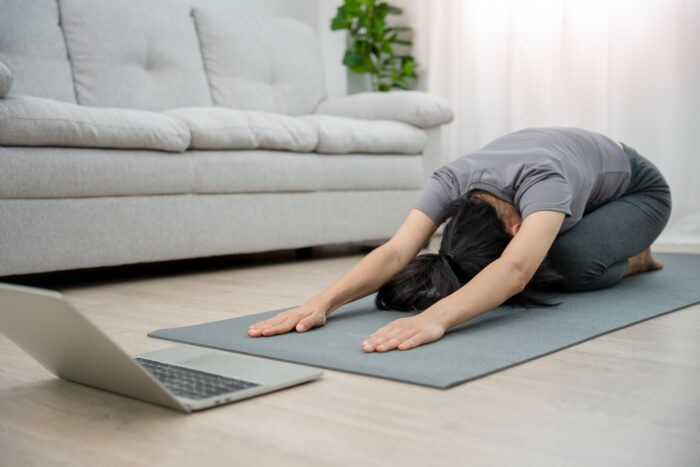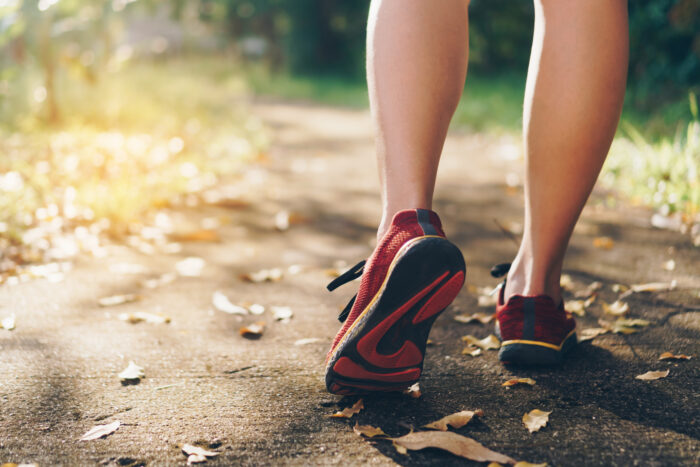
Yes, walking can be beneficial for relieving lumbar pain and promoting overall spinal health.
Here are several ways walking can help with lumbar pain…
Benefits of Walking for Lumbar Pain
- Improves Blood Circulation – Walking increases blood flow throughout the body, including to the muscles and tissues of the lower back. Improved circulation helps deliver nutrients and oxygen to the affected area, which supports healing and reduces inflammation.
- Promotes Joint Mobility – Walking gently moves the spine and engages the muscles around the lumbar region. This can help improve joint mobility, reduce stiffness, and enhance overall flexibility in the lower back.
- Strengthens Muscles – Walking is a weight-bearing exercise that engages various muscle groups, including the muscles that support the spine (such as the core muscles, glutes, and leg muscles). Strengthening these muscles can provide better support and stability for the lumbar spine, reducing strain and discomfort.
- Aids in Weight Management – Maintaining a healthy weight is important for reducing stress on the spine, especially the lumbar region. Walking regularly can contribute to weight management and help prevent or alleviate excess strain on the lower back.
- Promotes Endorphin Release – Physical activity like walking stimulates the release of endorphins, which are natural pain-relieving chemicals in the body. This can help reduce perception of pain and improve mood, which is beneficial for managing chronic lumbar pain.
- Improves Posture – Walking with proper posture (shoulders back, head aligned with the spine) helps reinforce good spinal alignment habits. This can prevent exacerbation of lumbar pain caused by poor posture.
- Low-Impact Exercise – Walking is generally considered a low-impact exercise, which means it puts minimal stress on the joints and spine compared to high-impact activities like running or jumping. This makes it suitable for many individuals with lumbar pain or spinal conditions.
Tips for Walking with Lumbar Pain
- Start Gradually – If you’re new to walking or have been inactive, start with shorter walks and gradually increase the duration and intensity as your endurance improves.
- Maintain Proper Form – Pay attention to your posture while walking. Keep your head up, shoulders back, and engage your core muscles to support your spine.
- Choose Supportive Footwear – Wear comfortable shoes with good arch support and cushioning to reduce impact on your feet and lower back.
- Listen to Your Body – If walking exacerbates your pain, modify your pace or distance. It’s important to find a balance between activity and rest to avoid overexertion.
- Combine with Stretching – Incorporate gentle stretching exercises for the lower back before and after walking to maintain flexibility and reduce muscle tightness.
When to Consult a Healthcare Professional
- If you have severe or worsening lumbar pain that does not improve with walking or if walking increases your pain significantly.
- If you have a history of spinal conditions or injuries, it may be beneficial to consult with a physical therapist or healthcare provider for personalized recommendations on exercise and pain management.
Walking can be an effective and low-impact way to alleviate lumbar pain, improve spinal health, and enhance overall well-being. By incorporating walking into your daily routine and practicing good posture and proper form, you can support your lower back health and reduce discomfort over time.
Related Posts
What Not To Do With A Lumbar Strain?
On
July 19, 2024
How Do You Stretch Your Lumbar?
On
May 26, 2024
Is Walking Good For Lumbar Strain?
On
June 13, 2024
How Do You Make Lumbar Pain Go Away?
On
July 13, 2024



